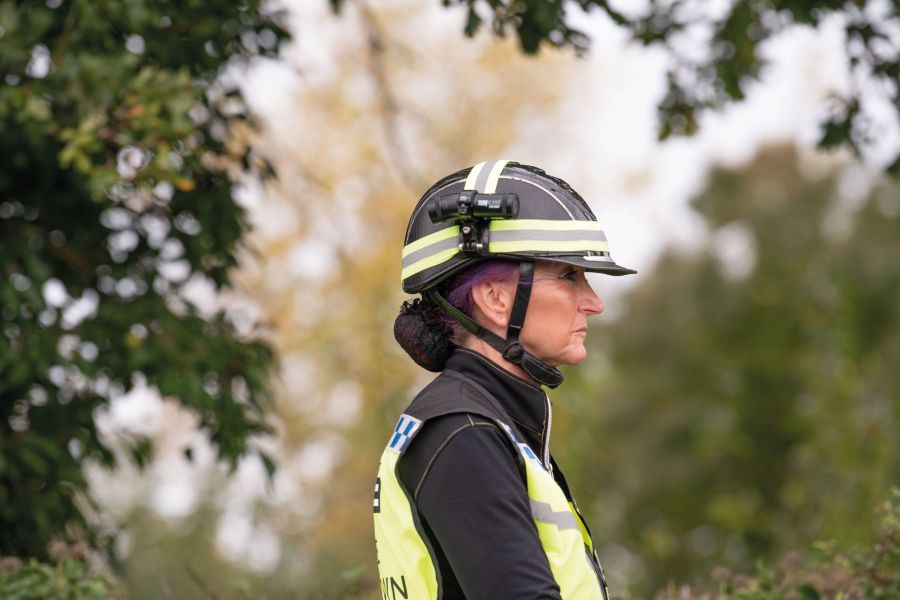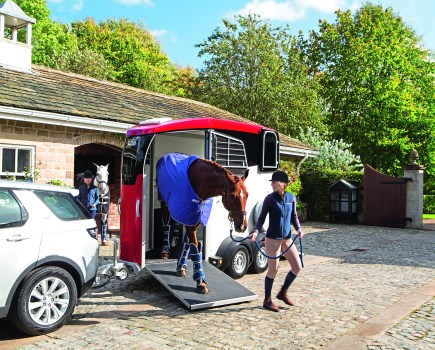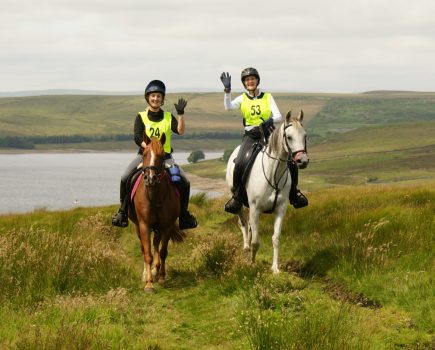Your Horse is supported by our audience and when you purchase through links on our site we may earn an affiliate commission. Here’s how it works
A quick Google search will tell you that there are few cameras made specifically for equestrians, but crucially there are several available — plus plenty of hat and body cams for cyclists and other sportspeople that can be adapted to suit horse riding.
Understanding what you’re looking for so that you buy the most effective camera within your budget is important, as the quality of the footage you capture could make all the difference should you find yourself reporting any incidents to the police.
I think a camera has become as vital as wearing a riding hat when you’re hacking a horse and I personally wouldn’t be without one. Video footage is the best way to both educate drivers/other road users and provide proof of their actions should you need to.
I’ve explained the most important criteria to look for in a camera below, plus you’ll find a selection of the latest cameras and up-to-date prices that I’ve found too.
Resolution
Resolution is the level of detail contained in an image. The higher the resolution the richer the pixel count — and the more detail and definition that can be seen.
It is one of the most important things to consider when choosing a camera, because quality is very important when you want to capture details like number plates and faces.
Imagine being involved in a traffic accident or experiencing road rage or a near-miss, and when you zoom in on the car’s number plate to report the driver it is blurred and unrecognisable. It renders your footage virtually useless.
Camera angle
The wider the angle of the lens on your camera the better, because its field of vision will be wider and therefore it will capture more when recording.
Crucially, this means less will disappear off the side of the screen. At the very least, you need a complete record of what happened on both sides of the road, and as much of the immediate area around you as possible.
Price
I was recommended by an industry expert to look for a camera with a resolution of at least 2,000 pixels, as these provide a wider image and more detail.
However, the better quality recording does tend to come with a higher price tag and, in my opinion, it’s better to have something rather than no recording device at all. So if your budget is tight, don’t be too quick to dismiss a product that is lower in pixels.
£200-£300
Expect to pay somewhere between £200 and £300 for a 2,000-pixel resolution camera, known as Quad HD, which is 2,560 pixels horizontally and 1,440 pixels vertically. This is almost double the resolution of a 1,080-pixel camera and you really can tell the difference, because the added pixels allow for a wider image and more detailing.
Also, when you zoom in, a 2,000-pixel image will retain more clarity, which could be vital when giving evidence to the police or an insurance company.
£300 plus
Higher priced cameras offer 4,000-pixel resolution and sometimes more. These offer even greater video clarity and detail. Increased pixel density results in sharper edges and the overall visual experience is more crisp.
Can the eye notice the difference? Not really, according to my partner who is far more tech-savvy than I am, unless the video or photo is viewed on a large screen (65in-plus) from 5ft away.
£100-£200
This is the average price bracket for a decent camera and they tend to have a 1,080-pixel resolution, which is also known as Full HD. This means that the image has 1,920 pixels horizontally by 1,080 vertically (1,920×1,080).
As I have already mentioned, using a lower resolution camera is arguably better than no camera at all, as many police force’s require video footage to accompany any reports submitted to them.
I have seen footage of riders saying a vehicle’s numberplate out loud in the event of an incident so that it is heard in the video, which is one way to clarify any blurred number plates.
However! Reading a number plate is unlikely to be the first thing you think of should you or your horse be frightened — or worse. It also may not stand up in a court of law or be accepted by an insurance company, should it get that far.
Camera position
Riders can wear a camera on the front of their body, on the front or on top of their head, or at the side of their head. A camera at the side of your head is the most visual to drivers, which may be a good thing.
On top of your head is the best position to capture incidents in full, as there is no risk of the view being blocked when your horse raises their head.
You naturally turn your head towards the area of concern when something happens, so your chances of getting the footage you need are better with a hat cam.
Dual recording
The most effective way to capture video footage is with a ‘dual’ or ‘two-way’ hat camera, because these record at the front and back at the same time.
This could be invaluable for anyone hit from behind while riding on the road. It also increases the amount of footage you have of an incident.
Some police forces ask for two minutes of recorded footage either side of the incident itself to be uploaded via Operation Snap. Dual recording will help to fulfil this requirement.
Waterproof rating
Look for a camera with a waterproof rating of at least IP66. This test is rated with a 12.5mm multi-directional water jet under high pressure and anything less than IP66 is not good enough for riding in the British weather, which is where I ride.
The test also considers exposure to dust and dirt, keeping the camera in excellent working condition if it is stored at the stables, for example.
Weight
Consider how big and how heavy a camera is, because it needs to be comfortable to wear. Go for a camera that’s compact and lightweight, so that you’re not bothered by it when you’re riding.
Battery life
This is another key consideration, because you don’t want it to stop recording halfway through your ride. Look for a camera with a battery life of several hours at least, and make sure it is quick and easy to charge at the yard.
Mount
Check whether the camera comes with a mount that will work with your riding hat. Some require a mount to be purchased separately. Harnesses are also available for those who prefer to wear a camera on their chest, but you’ll need to choose a suitable camera to use with it.
Accessing footage
Make sure you know how to download footage and transfer it to a phone and/or computer. Some may do this wirelessly via bluetooth or wifi; others will require a cable.
You will need to be able to transfer recordings quickly and easily, because any incidents that occur should be reported to the police on the same day. The police have a short timeframe (two weeks from the day of the incident) to investigate.
Memory card
Find out if the camera requires a memory card and whether it needs to be purchased separately. Also consider how much storage space it has. The bigger the storage, the more footage it will hold.
Loop recording
Having a loop record function means that once the memory card becomes full, it will loop back around and start recording over the oldest videos so that recording is not interrupted.
Shop for a camera
Equisafety OculosPro 2-Way Horse Riding Helmet Camera
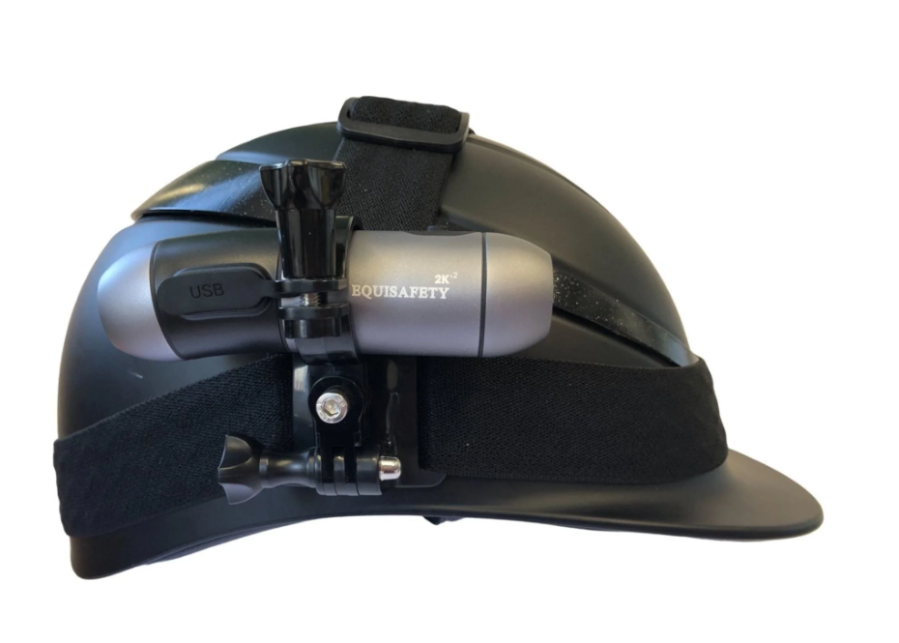
Equisafety’s OculosPro is specifically made for horse riders. It includes a protective camera case, adjustable hat band and 64GB SD card. Has a 2,000-pixel resolution, four-hour battery life and 170-degree camera angle. This camera fixes to the side of a riding hat, records front and back, and weighs 105g.
Oculus is Latin for ‘eyes’ and the camera’s creator says wearing one will be like “having eyes on the back of your head”. It is also the first in the world to be a 2K dual camera with 340-degree recording vision.
RRP £239.95
Techalogic HC-1 Ultra Lightweight Camera for Riding
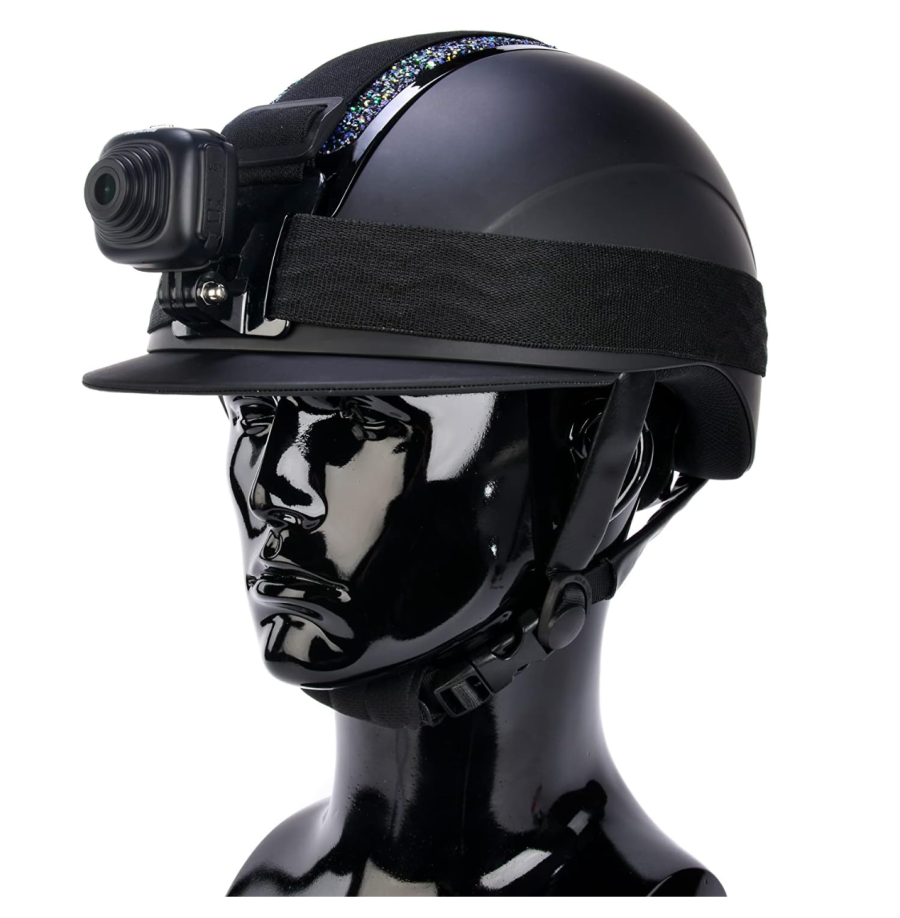
The Techalogic HC-1 has a 2,000-pixels resolution and was developed in the UK for equestrian use. It is lightweight (48g) and has a 2.5-hour run time.
The camera will fit on any style of horse riding helmet using the supplied plain black elasticated head strap. It contains an in-built microphone and a micro SD card (not included) of up to 256gb can be used for up to 20 hours of video and audio recording time.
Footage can be viewed and edited on the Wifi App. This camera is IP65 waterproof.
Technalogic DC-1 Dual Lens Camera
This dual camera fits on the side of a riding hat and records both front and back. It has a 140-degree lens to provide a wide field of vision when recording. Supports a micro-SD card of up to 128GB (bought separately). IP65 waterproof and weighs 104g. It has a resolution of 1,080p and a battery life of 2.5 hours. There is also the option of purchasing a high vis hat strap.
Recall Rider Dual Twin Front & Rear Riding Camera

This two-way camera records front and back with a 1,080-pixel resolution and includes a 128GB micro SD card. It has loop record functionality and multiple mounting options designed to accommodate an external power pack for extended recording time. Connects to mobile phone apps to transfer and view footage.
KIMISS Sports Action Camera
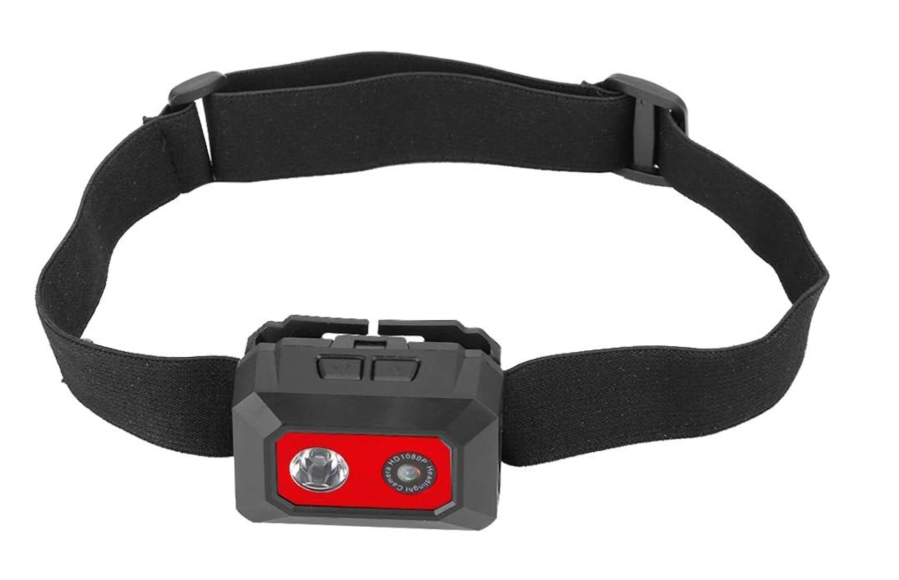
A 1,080-pixel hat horse riding with a 120-degree ultra-wide angle. In-built battery provides up to six hours of recording when the light-off mode is activated. Also doubles up as an LED headlight. Features loop recording and supports up to a 32GB TF card (bought separately).
Techalogic DC-2 Pro Dual Lens Camera
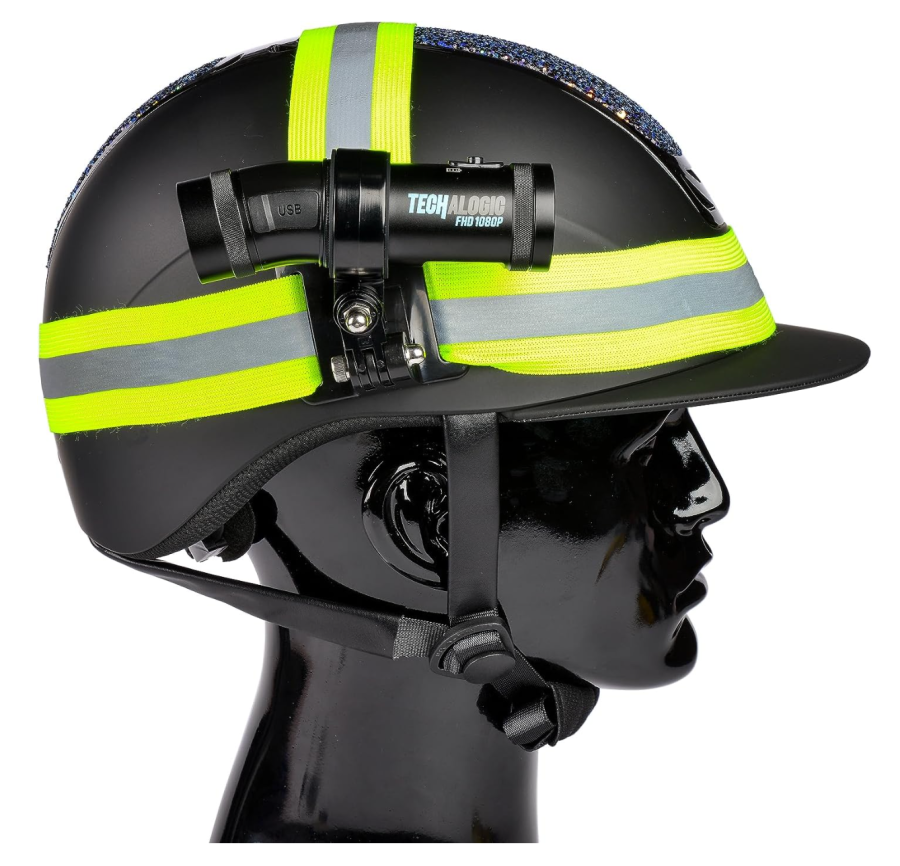
The Techalogic DC-2 builds on the success of the best selling DC-1 (above). This version records front and rear and in 2k pixel-resolution. Equipped with a 140-degree lens to ensure the widest field of vision. Features loop video recording and supports up to a 128gb Micro SD Card. Battery life of up to four hours of dual recording when recording at 1080HD@30fps. This can be extended with a USB C Powerbank. Optional remote control. Weighs 104g. IP67 water rated.
Recall Rider 4k Horse Riding Camera
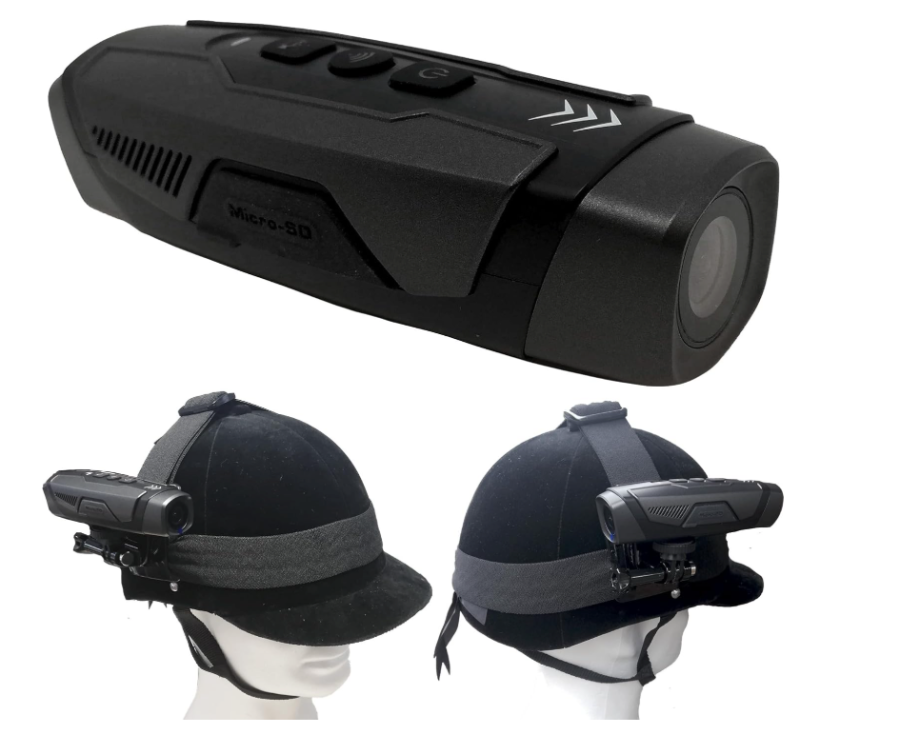
High-quality 4K video recording capabilities with a 170-degree wide-angle lens. Has an in-built G-Sensor, which means it can be set to automatically save your recording from a heavy knock. The kit comes with a full long-life expansion pack that extends the camera’s operating time over seven hours. Various mounting options are included, plus there’s a waist pouch for holding the battery pack.
Related content
- ‘Fear for safety has increased’: survey finds 75% of riders have been involved in a road incident
- Incidences of road rage towards riders nearly doubled last year, while 58 horses were killed on UK roads
- Operation Snap: what it is and why more horse riders need to use it
- Report all road incidents to the BHS to make a real difference to horse and rider safety

